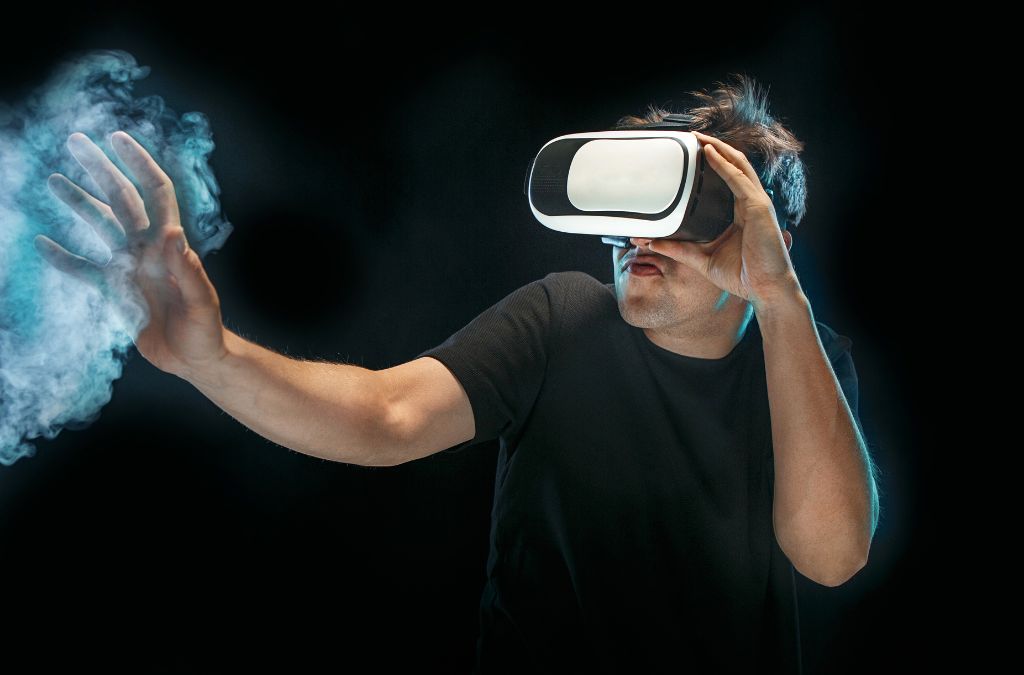In recent years, Augmented Reality (AR) has emerged as a transformative technology that blurs the line between the physical and digital worlds. With the ability to overlay computer-generated images onto the real environment, AR has found its way into various industries, revolutionizing how businesses interact with their customers.
From retail to the environment and healthcare, AR is playing a pivotal role in enhancing the customer experience. This blog explores the multifaceted impact of AR and how it is reshaping customer interactions and expectations.
Contents
1. Immersive Product Visualization
One of the primary roles of AR in enhancing the customer experience is its capacity to offer immersive product visualization. In the retail industry, AR enables customers to virtually try on clothing, accessories, and cosmetics, helping them make informed purchase decisions. Through AR-powered applications on smartphones or smart mirrors in brick-and-mortar stores, customers can see how products look on them in real time, eliminating the need for physical trial rooms and increasing customer satisfaction.
Moreover, AR is transforming the furniture industry by allowing customers to visualize how furniture pieces fit into their living spaces. By using AR apps, customers can virtually place furniture in their homes, ensuring that it compliments their existing decor. This interactive and personalized experience enhances customer confidence in their buying decisions, leading to reduced returns and increased sales.
2. Enhanced Retail Engagement
AR also plays a significant role in boosting retail engagement. In-store AR experiences captivate customers and create memorable interactions with brands. Brands can set up AR stations or interactive displays that entertain and educate customers about their products or services. For instance, cosmetics brands can use AR mirrors that apply virtual makeup, while toy stores can use AR games to engage children and their parents.
Furthermore, AR-powered scavenger hunts and treasure hunts within retail spaces can drive foot traffic and encourage customers to explore the store fully. Through the shopping experience, retailers can foster a deeper connection with their customers, leading to increased brand loyalty and word-of-mouth marketing.
3. Interactive Marketing Campaigns
Augmented Reality has redefined marketing campaigns by adding an interactive layer to traditional advertising efforts. Brands can create AR-based experiences accessible through smartphones, encouraging customers to engage with the brand in novel and exciting ways. This interactively not only enhances customer engagement but also creates a lasting impression, making the brand stand out in a competitive market.
For example, AR-powered outdoor billboards can allow passers-by to interact with the advertisement, offering discounts or special offers to those who engage with the content. This level of personalization makes the customer feel valued and appreciated, leading to a more positive perception of the brand.
4. AR in Entertainment and Tourism
Entertainment and tourism industries have embraced AR to enrich customer experiences. AR-based mobile applications provide interactive and educational experiences at museums, historical sites, and tourist attractions. Visitors can use their smartphones to access AR content, such as historical re-enactments, 3D models of artifacts, and additional information, enhancing their understanding and enjoyment of the location.
In the entertainment sector, AR is revolutionizing the gaming experience. Popular AR games like Pokemon Go have shown the potential of AR in creating immersive and location-based gaming experiences. Customers can explore their surroundings while interacting with virtual elements, making the gaming experience more engaging and memorable.
5. AR in Education and Training
AR has made a significant impact on education and training, offering an innovative approach to learning. AR applications are being utilized to provide interactive and visual learning experiences for students. Complex subjects, such as anatomy or engineering, can be taught through 3D models and interactive simulations, making learning more engaging and effective.
In the corporate world, AR is transforming employee training programs. For instance, in the manufacturing industry, AR can be used to provide step-by-step guidance on assembling products, reducing errors, and improving training outcomes. In healthcare, AR can help medical professionals practice procedures and surgeries in a risk-free virtual environment.
6. AR for Customer Support and After-Sales Services
AR is becoming increasingly valuable in customer support and after-sales service. By using AR-powered apps, customers can receive real-time guidance and support for troubleshooting issues with products or services. Brands can provide interactive AR manuals, which overlay instructional information directly onto the product, making it easier for customers to use and maintain their purchases.
In complex technical industries, such as automotive and aviation, AR assists technicians in repairs and maintenance tasks. With AR goggles or devices, technicians can access digital overlays of technical information, diagnostic tools, and repair instructions, leading to faster and more accurate service.
Conclusion:
Augmented Reality (AR) has become a driving force in enhancing the customer experience across various industries. From retail to entertainment and healthcare education, AR’s ability to create immersive and interactive experiences is reshaping customer interactions and expectations. By providing immersive product visualization, enhancing retail engagement, and enabling interactive marketing campaigns, AR is elevating brand-consumer relationships.
In education and training, AR is transforming the learning experience, making it more engaging and effective. In customer support and after-sales service, AR is revolutionizing troubleshooting processes and improving after-sales experiences. As technology continues to evolve, businesses that embrace AR are likely to stay at the forefront of customer relationships and drive long-term success in a competitive marketplace.
Frequently Asked Questions (FAQs)
1. What are some examples of AR enhancing the retail experience?
AR can be used in retail for virtual try-ons of clothing and accessories, visualizing furniture in your home before purchases, or even guiding customers to products in a store through AR navigation apps.
2. Can AR be used in education and training?
Yes, AR is increasingly used for educational purposes, allowing students to interact with 3D models, explore historical simulations, or participate in virtual lab experiments for a more engaging learning experiences.
3. What are some challenges in implementing AR for enhancing customer experiences?
Challenges include the need for user-friendly AR apps, ensuring compatibility with various devices, and privacy concerns regarding data collection through AR applications.
4. How AR enhances the customer experience?
AR enhances the customer experience by providing immersive and interactive content that can improve product visualization, offer virtual try-ons, provide real-time information, and create engaging marketing campaigns.


